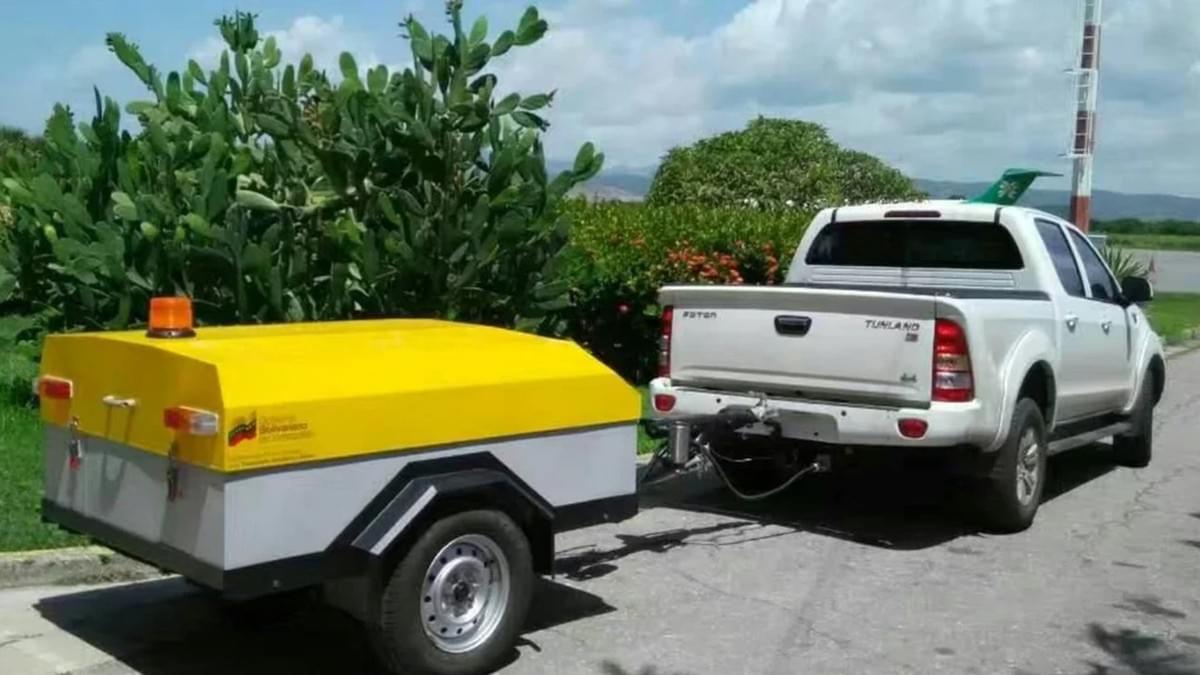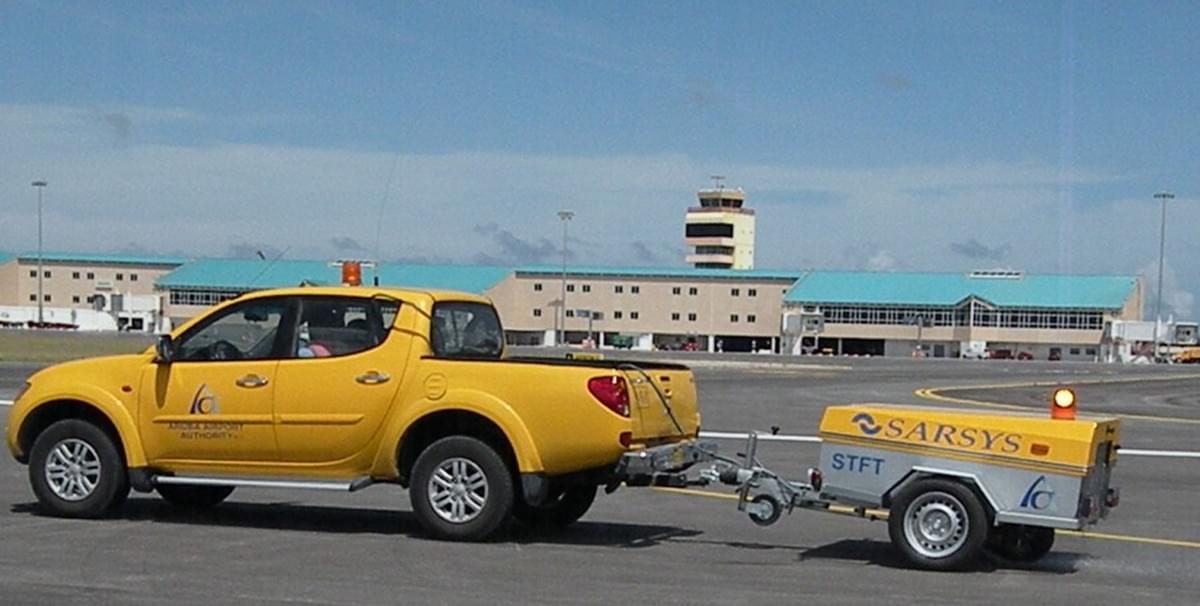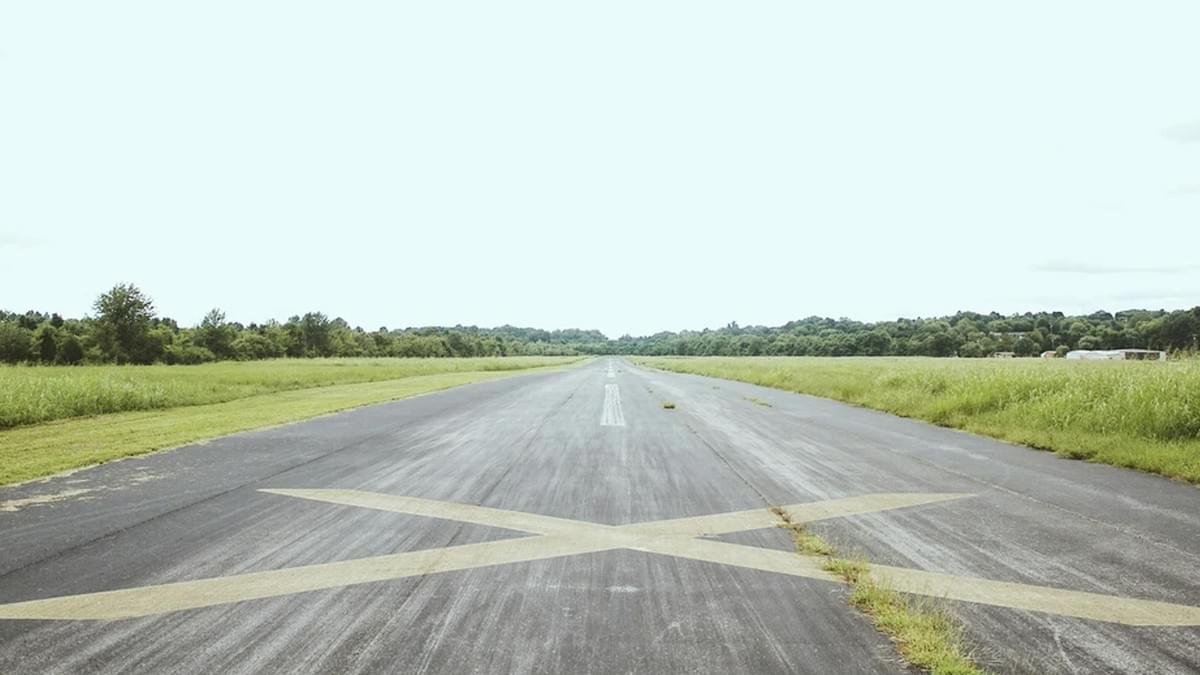In the complex and highly regulated world of aviation, safety is the utmost priority. Every aspect of airport operations, from aircraft maintenance to air traffic control, is meticulously designed to ensure the well-being of passengers and crew. One often overlooked but critically important element in this safety ecosystem is the assessment of runway surface conditions, and at the heart of this assessment lies the Surface Friction Tester.
The Significance of Runway Safety
Runway safety is a multifaceted concept that encompasses a wide range of factors, all of which are crucial for preventing accidents and ensuring the smooth operation of aircraft during takeoff and landing. The runway environment is a high-stakes area where even the smallest deviation from optimal conditions can have catastrophic consequences.
Takeoffs and landings are considered the most critical phases of flight, with a significantly higher risk of accidents compared to cruising at altitude. The runway, a finite and highly trafficked space, often sees a continuous stream of aircraft taking off and landing, sometimes in adverse weather conditions and with limited visibility. These circumstances increase the potential for ground collisions and excursions, such as overrunning or undershooting the runway during takeoff or landing.
Runway accidents can result in significant loss of life and injury, as well as substantial damage to aircraft and airport infrastructure. For example, the Tenerife airport disaster in 1977, the world's deadliest aviation accident, involved a collision between two passenger jumbo jets on a runway, resulting in the tragic loss of 583 lives. In the United States, the Comair Flight 5191 crash in 2006, which occurred when the aircraft attempted to take off from the wrong runway, claimed 49 of the 50 people on board. These incidents serve as stark reminders of the importance of maintaining the highest standards of runway safety.

The Role of Surface Friction in Runway Safety
The surface friction of a runway plays a pivotal role in ensuring the safe operation of aircraft during takeoff and landing. Adequate surface friction is essential for several reasons:
Braking Performance
During landing, aircraft rely on their brakes to decelerate and come to a stop within the available runway length. The effectiveness of the brakes is directly influenced by the friction between the aircraft tires and the runway surface. Insufficient surface friction can lead to longer braking distances, increasing the risk of overrunning the runway. In wet or icy conditions, for example, the coefficient of friction between the tires and the runway can be significantly reduced, making it crucial to have accurate information about the surface friction to ensure safe landings.
Takeoff Acceleration
Similarly, during takeoff, the friction between the tires and the runway is necessary for the aircraft to gain traction and accelerate smoothly. Without sufficient surface friction, the aircraft may experience wheel spin or difficulty in achieving the required takeoff speed, potentially leading to a rejected takeoff or other safety issues.
Directional Control
Surface friction also affects the aircraft's ability to maintain directional control during takeoff, landing, and taxiing. A lack of friction can cause the aircraft to skid or veer off course, increasing the risk of collisions with other aircraft, vehicles, or airport infrastructure.
How Surface Friction Testers Work
Surface Friction Testers are specialized instruments designed to measure the friction characteristics of runway surfaces accurately. These testers employ various methods and technologies to determine the coefficient of friction between the testing device and the runway surface.
Types of Surface Friction Testers
- Trailer - Mounted Friction Testers: These are commonly used in airport runway testing. They are typically towed behind a vehicle and are equipped with a water tank and watering system. The watering system is used to simulate wet runway conditions, as wet surfaces pose a significant challenge to aircraft braking and traction. The tester measures the force required to tow a test wheel or a set of test wheels across the runway surface under wet or dry conditions. By measuring this force and knowing the vertical load on the test wheels, the coefficient of friction can be calculated. For example, the BHM 02 trailer friction tester has a water tank with a capacity of 600 liters, allowing for continuous wet testing over a distance of up to 7,000 meters. It is equipped with 3 triped tires that meet the requirements of CAAC, ICAO, and FAA, and the tire material is the same as that used in aircraft tires, with a working pressure of 0.7 MPa.

- Vehicle - Mounted Friction Testers: Some friction testers are integrated into vehicles, such as the Scandinavian Airport and Road Systems AB (SARSYS - ASFT) Surface Volvo Friction Tester (SVFT). This tester is based on a Volvo V70 car and operates via a measuring wheel that is mechanically geared to one of the rear main wheels of the base car. Friction against the runway surface, combined with the vertical load on the measuring wheel, creates forces on the measuring wheel mechanism that are constantly measured by an electronic sensor system. The signals from the sensor system are processed in the SVFT's measuring computer system, which continuously calculates the friction coefficient, the friction number, and the relation between the horizontal and vertical forces acting on the measuring wheel. The result is then shown on the screen in a color graph or can be printed on paper in diagram form and figures. The data can also be transmitted to other receivers by means of a radio link or PC - USB.
- Portable Friction Testers: These are smaller, handheld or portable devices that can be used for quick spot checks or in areas where larger testers are not practical. For example, the BOT - 3000E Digital Tribometer is a portable surface friction tester that can measure the slip resistance properties of most common indoor flooring or walkway surfaces. It complies with ANSI A137.1, B101.1, and B101.3 standard test methods and has features such as an on - board camera to help accurately document precise testing locations, time/date - stamped test results printed on thermal paper, and a USB port for transferring test results (with embedded photos) to any PC or Mac.
Measuring Principles
- Skid - Resistance Testing: Many surface friction testers use the principle of skid - resistance testing. In this method, a test wheel is rotated at a constant speed while being dragged across the runway surface. The force required to maintain the rotation of the wheel against the resistance of the surface is measured. The higher the force required, the greater the coefficient of friction between the wheel and the surface.
- Dynamic Friction Testing: Some testers measure dynamic friction, which is the friction force experienced when two surfaces are in relative motion. This is particularly relevant for aircraft tires on a moving runway surface during takeoff and landing. By measuring the dynamic friction, the tester can provide valuable information about the braking and traction capabilities of the runway.
- Static Friction Testing: Static friction testing measures the force required to initiate movement between two surfaces that are initially at rest. While static friction is not directly equivalent to the friction experienced during aircraft operations, it can provide an indication of the surface's overall friction characteristics and its ability to resist the initial movement of an aircraft.
Factors Affecting Runway Surface Friction
The surface friction of a runway can be influenced by a variety of factors, both natural and man - made. Understanding these factors is essential for accurately interpreting the results of surface friction testing and implementing appropriate measures to maintain optimal runway conditions.
Weather Conditions
- Rain and Wet Surfaces: Rain is one of the most common factors that can reduce runway surface friction. When the runway is wet, a thin film of water forms between the aircraft tires and the surface, creating a lubricating effect that reduces the coefficient of friction. This can lead to longer braking distances and increased difficulty in maintaining directional control. In heavy rain, the risk of hydroplaning, where the tires lose contact with the runway surface and ride on a layer of water, also increases.
- Snow and Ice: Snow and ice on the runway pose an even greater threat to surface friction. Ice, in particular, has a very low coefficient of friction, making it extremely slippery for aircraft tires. Snow can also reduce friction, especially when it becomes compacted or mixed with ice. In cold weather conditions, it is crucial to keep the runway clear of snow and ice through de - icing and anti - icing procedures.
- Temperature: Temperature can affect the physical properties of the runway surface and the aircraft tires, which in turn can impact surface friction. In very cold temperatures, the rubber in aircraft tires can become stiff, reducing its ability to conform to the runway surface and grip effectively. On the other hand, high temperatures can cause the runway surface to soften, potentially leading to changes in its friction characteristics.
Runway Surface Material and Condition
- Asphalt vs. Concrete: Different runway surface materials have different friction characteristics. Asphalt runways tend to provide better friction in dry conditions but may be more prone to reduced friction in wet conditions compared to concrete runways. Concrete runways, on the other hand, are generally more durable and can maintain better friction performance over time, but they may also be more susceptible to surface degradation and cracking.
- Surface Texture: The texture of the runway surface plays a significant role in determining its friction properties. A rough - textured surface provides more grip for aircraft tires, increasing the coefficient of friction. Runways are often designed with a specific texture to enhance friction, and regular maintenance may be required to preserve this texture. Over time, the surface texture can be worn down by the repeated passage of aircraft, reducing friction.
- Contamination: Runway contamination, such as oil, fuel, rubber deposits, or debris, can also affect surface friction. Oil and fuel spills can create slippery spots on the runway, while rubber deposits from aircraft tires can build up and reduce the effectiveness of the surface texture. Debris on the runway can also pose a hazard to aircraft tires and may interfere with the proper functioning of surface friction testers.

Aircraft Operations
- Tire Wear and Pressure: The condition of aircraft tires, including their wear and pressure, can impact the friction between the tires and the runway surface. Worn - out tires may have a reduced tread depth, which can decrease their ability to grip the runway. Incorrect tire pressure can also affect the contact area between the tire and the surface, altering the coefficient of friction.
- Braking and Thrust Reverser Usage: The way aircraft use their brakes and thrust reversers during landing can influence the wear and friction characteristics of the runway surface. Aggressive braking or improper use of thrust reversers can cause excessive heat and wear on the runway, potentially leading to a reduction in surface friction over time.
The Importance of Regular Surface Friction Testing
Regular surface friction testing is essential for several reasons:
Ensuring Compliance with Regulatory Standards
Aviation regulatory bodies, such as the International Civil Aviation Organization (ICAO), the Federal Aviation Administration (FAA), and other national aviation authorities, have established strict standards and guidelines regarding runway surface friction. These standards are designed to ensure the safety of aircraft operations and to provide a consistent framework for airports around the world. By regularly testing the surface friction of runways, airports can demonstrate compliance with these regulatory requirements and avoid potential penalties or operational restrictions.
Identifying Safety Risks in a Timely Manner
Surface friction testing can help identify potential safety risks before they lead to accidents. By detecting changes in the surface friction characteristics of the runway, airports can take proactive measures to address issues such as runway contamination, surface degradation, or the effects of weather conditions. For example, if a surface friction test reveals a significant reduction in friction in a particular area of the runway, the airport can promptly clean or repair the surface to restore optimal friction levels.
Improving Airport Operations and Maintenance Planning
Accurate surface friction data can also be used to optimize airport operations and maintenance planning. By understanding the friction characteristics of different runway surfaces and how they are affected by various factors, airports can make informed decisions about runway usage, maintenance schedules, and the deployment of resources for de - icing, anti - icing, and surface cleaning operations. This can help improve the efficiency and effectiveness of airport operations while ensuring the highest level of safety.
Case Studies of Surface Friction Testing in Action
To illustrate the practical importance of surface friction testing, let's consider a few case studies:
Case Study 1: Airport X's Experience with Wet Runway Conditions
Airport X, located in a region with frequent rainfall, experienced a series of close calls during landings in wet weather. Concerned about the safety of its operations, the airport decided to conduct more frequent surface friction testing using a trailer - mounted friction tester. The tests revealed that certain areas of the runway had significantly reduced surface friction in wet conditions due to a combination of surface wear and the accumulation of rubber deposits.
Based on the test results, the airport implemented a comprehensive maintenance program that included surface grinding to restore the texture of the runway, as well as regular cleaning to remove rubber deposits. After implementing these measures and continuing to monitor surface friction regularly, the airport saw a significant improvement in the safety of its landings in wet weather, with no further close calls reported.
Case Study 2: Detecting Runway Contamination at Airport Y
Airport Y received a report from a pilot that the runway felt "slippery" during takeoff. To investigate the issue, the airport immediately deployed a portable surface friction tester to conduct spot checks along the runway. The tests revealed that there was a patch of oil contamination on the runway, likely from a maintenance vehicle that had leaked fluid earlier in the day.
The airport quickly closed the affected area of the runway and initiated cleanup procedures. By using the surface friction tester to identify the source and extent of the contamination, the airport was able to take prompt action to prevent any potential accidents and ensure the continued safe operation of its aircraft.
Case Study 3: Using Surface Friction Data for Winter Operations Planning
Airport Z, located in a cold climate region, faced the challenge of maintaining safe runway conditions during the winter months when snow and ice were common. To better prepare for winter operations, the airport collected historical surface friction data from previous winters and analyzed it in conjunction with weather data.
Based on this analysis, the airport developed a more effective winter operations plan that included optimized de - icing and anti - icing procedures, as well as the deployment of additional surface friction testing equipment during periods of extreme weather. By using surface friction data to inform its decision - making, the airport was able to improve the safety and efficiency of its operations during the winter, reducing the number of flight delays and cancellations due to runway conditions.
Choosing the Right Surface Friction Tester for Your Airport
When selecting a surface friction tester for an airport, several factors should be considered:
Testing Requirements
- Accuracy and Precision: The tester should be capable of providing accurate and precise measurements of surface friction. This is crucial for ensuring compliance with regulatory standards and for making informed decisions about runway maintenance and operations. Look for testers that have been calibrated and certified to meet industry - recognized standards.
- Testing Conditions: Consider the specific testing conditions at your airport, such as the type of runway surface (asphalt or concrete), the frequency of wet or icy conditions, and the need for testing in different weather conditions. Some testers are better suited for wet - surface testing, while others may be more versatile and able to handle a variety of conditions.
- Testing Coverage: Determine the extent of runway coverage required. If your airport has multiple runways or large areas to test, you may need a tester that can cover a significant distance in a single pass or one that can be easily towed or transported between different testing locations.

Equipment Features and Functionality
- Data Acquisition and Analysis: The tester should be equipped with a reliable data acquisition system that can collect and store surface friction data in a format that is easy to analyze. Look for testers that offer features such as real - time data display, data logging, and the ability to generate reports and graphs. Some testers also have advanced data analysis software that can help identify trends and patterns in the surface friction data.
- Ease of Use and Maintenance: Choose a tester that is easy to operate and maintain. This includes features such as user - friendly interfaces, simple calibration procedures, and readily available spare parts. A tester that is difficult to use or maintain may lead to inconsistent testing results or increased downtime.
- Compatibility with Existing Systems: If your airport already has an airport management system or other data - collection systems in place, consider a surface friction tester that can integrate with these systems. This can help streamline data management and improve the overall efficiency of your airport operations.
Cost - Effectiveness
- Initial Investment: Compare the upfront cost of different surface friction testers, including the cost of the equipment, installation, and any necessary training. However, don't base your decision solely on price; also consider the long - term value and performance of the tester.
- Operating and Maintenance Costs: Factor in the ongoing operating and maintenance costs of the tester, such as the cost of consumables (e.g., water for wet - surface testing), energy consumption, and the cost of regular maintenance and calibration. A more expensive tester with lower operating and maintenance costs may be a more cost - effective choice in the long run.
Conclusion
In conclusion, the Surface Friction Tester is an indispensable tool for assessing runway safety. By accurately measuring the surface friction of runways, these testers provide critical information that helps ensure the safe operation of aircraft during takeoff and landing. Runway surface friction is a complex and dynamic factor that is influenced by a variety of weather, surface - related, and aircraft - related factors. Regular surface friction testing is essential for complying with regulatory standards, identifying safety risks in a timely manner, and improving airport operations and maintenance planning.
Through case studies, we have seen how surface friction testing has helped airports address specific safety challenges and improve the overall safety of their operations. When choosing a surface friction tester, airports should carefully consider their testing requirements, the features and functionality of the equipment, and the cost - effectiveness of the solution.
As the aviation industry continues to grow and evolve, the importance of maintaining the highest standards of runway safety will only increase. Surface Friction Testers will play a vital role in this effort, providing airports with the data they need to make informed decisions and take proactive measures to ensure the safety of passengers, crew, and airport personnel.

